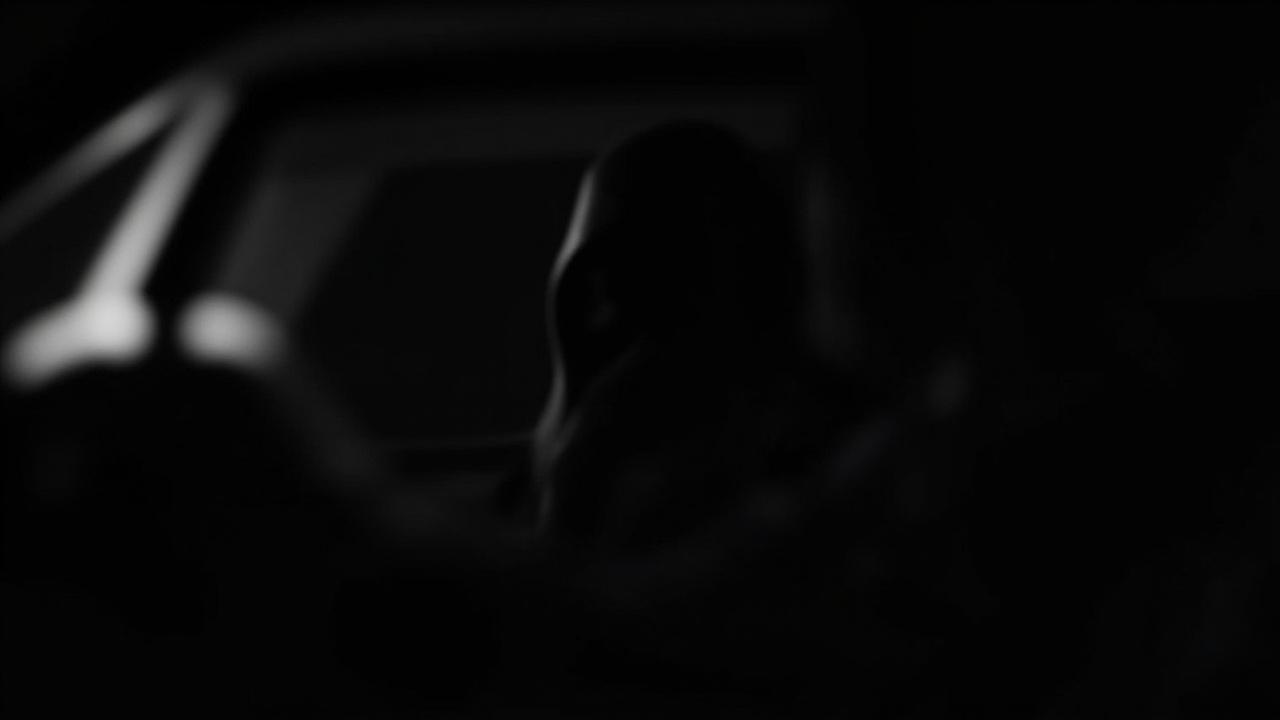Introduction
California’s Three Strikes Law socal, initially intended to reduce crime by targeting repeat offenders, has left an undeniable mark on the state’s criminal justice system. Enacted in 1994, the law dramatically increased penalties for individuals convicted of a felony who had prior “strike” convictions, leading to lengthy prison sentences, even for relatively minor offenses.
While proponents lauded it as a vital tool for public safety, the law quickly became mired in controversy due to its perceived harshness and disproportionate impact on certain communities.
Nowhere has the impact of Three Strikes been felt more acutely than in Southern California. Factors such as socioeconomic disparities, historical crime trends, and the region’s sheer population density have contributed to a higher concentration of Three Strikes cases in SoCal compared to other parts of the state.
The legacy of this law continues to shape the lives of countless individuals, families, and communities across Southern California, raising critical questions about fairness, justice, and the long-term consequences of mass incarceration.
This blog post aims to provide a comprehensive overview of California’s Three Strikes Law, focusing specifically on its application and impact within Southern California. We’ll delve into the mechanics of the law, examining what constitutes a strike offense and how sentencing enhancements work.
We’ll also explore the unique challenges faced by individuals and communities in Southern California affected by Three Strikes, considering the legal battles, reforms, and ongoing debates that define its enduring legacy. Consider the case of a man sentenced to 25 years to life for stealing a pizza, simply because of two prior non-violent offenses; this is the reality for many caught in the web of Three Strikes in SoCal.
Understanding the Basics
California’s Three Strikes Law, enacted in 1994, dramatically altered the state’s sentencing guidelines with the intent of curbing repeat offenses. At its core, the law operates on a tiered system. The first felony conviction is treated as a standard sentence, but the presence of one or more prior “strike” convictions can trigger significant enhancements.
These prior strikes must be classified as either serious or violent felonies under California law. The definitions of these felonies are specifically enumerated in the penal code, and range from offenses like murder, robbery, and rape to other offenses depending on the circumstances. Understanding exactly what constitutes a strike offense is critical, as it determines the entire trajectory of a case under the *california three strikes law socal*.
The severity of the penalties escalates with each subsequent strike. A second strike conviction effectively doubles the sentence that would normally be imposed for the new felony. In effect, the defendant is facing twice the time compared to someone with no prior strikes.
This can turn what might have been a moderate sentence into a very lengthy one. The implications of this law are not just theoretical; they translate into years, even decades, added to a person’s prison term. This is especially true in Southern California where the law has been rigorously applied.
A third strike, the most severe consequence, mandates a sentence of 25 years to life in prison. This applies regardless of the nature of the third felony, provided it is a felony offense. Originally, any felony could trigger a third strike.
However, Proposition 36, passed in 2012, modified this aspect of the law. Now, a third strike generally must be a serious or violent felony, although there are exceptions if the prior strikes meet certain criteria. This reform aimed to address concerns about disproportionate sentencing, but the law’s fundamental structure remains in place, casting a long shadow over the criminal justice system, especially in the *california three strikes law socal* region.
| Strike Number | Sentence Enhancement |
|---|---|
| First Strike | Standard Sentence |
| Second Strike | Double the Sentence |
| Third Strike | 25 Years to Life |
Geographical Impact
Southern California’s unique position within the state makes it a focal point when analyzing the effects of the Three Strikes Law. The region’s high population density, diverse socioeconomic landscape, and historical crime trends have all contributed to a higher rate of Three Strikes sentencing compared to other areas of California. Understanding these factors is crucial to grasping the true impact of the law.
Several elements converged to make SoCal particularly susceptible to the stringent penalties associated with the Three Strikes Law. One major factor is simply the sheer volume of people living in Southern California. With a larger population, there is statistically going to be more crime, and subsequently, more opportunities for individuals to be charged under the three strikes law.
Furthermore, socioeconomic disparities play a significant role. Poverty, lack of access to education, and limited employment opportunities can contribute to higher crime rates in certain communities, making residents more vulnerable to repeat offenses and, ultimately, Three Strikes sentencing.
The historical context is also important to consider. During the period when the Three Strikes Law was gaining traction, Southern California experienced a surge in crime, particularly violent crime. This led to widespread public fear and a strong demand for stricter law enforcement measures. Politicians responded by championing the Three Strikes Law as a solution to the perceived crisis.
Consequently, the law was implemented and enforced aggressively in SoCal, leading to a disproportionate number of individuals receiving harsh sentences. Analyzing the data reveals a stark reality: individuals in Southern California are more likely to be sentenced under the Three Strikes Law than their counterparts in other parts of the state. This disparity raises concerns about fairness and equal justice under the law.
| Factor | Impact on Three Strikes Sentencing in SoCal |
|---|---|
| High Population Density | More opportunities for crime and subsequent Three Strikes charges. |
| Socioeconomic Disparities | Poverty and lack of opportunity contribute to higher crime rates in certain communities. |
| Historical Crime Trends | A surge in crime in the 1990s led to strong support for stricter law enforcement measures. |
The Ripple Effect
The long-term consequences for individuals convicted under Three Strikes extend far beyond the prison walls, creating a ripple effect that impacts their ability to reintegrate into society. Finding stable employment becomes an immense hurdle. Many employers are hesitant to hire individuals with extensive criminal records, particularly those marked by the stigma of “Three Strikes.” This difficulty in securing legitimate work can, unfortunately, contribute to recidivism as individuals struggle to support themselves and their families.
Housing Insecurity and Social Stigma
Similarly, obtaining suitable housing is often an insurmountable challenge. Landlords frequently deny applications from those with felony convictions, leaving formerly incarcerated individuals vulnerable to homelessness or forced to reside in unstable living situations. This lack of stable housing further hinders their ability to rebuild their lives and maintain positive connections with the community.
The social stigma associated with a Three Strikes conviction further compounds these difficulties. These individuals may face discrimination and alienation from family, friends, and the broader community, making it even more challenging to establish a support network and transition back into society.
The ripple effect extends to families and communities, particularly those in low-income areas of Southern California. Children with incarcerated parents are more likely to experience poverty, instability, and emotional distress, potentially leading to negative outcomes in their own lives.
The absence of a parent due to a Three Strikes sentence can strain family relationships, disrupt household dynamics, and create financial hardship. Communities with high rates of Three Strikes convictions often suffer from decreased social cohesion and increased rates of poverty and crime, perpetuating a cycle of disadvantage.
Furthermore, the financial burden on the state and local governments due to the high cost of incarceration for Three Strikes offenders is substantial. Taxpayer dollars are diverted away from essential services such as education, healthcare, and infrastructure to fund the incarceration of a relatively small segment of the population.
This diversion of resources can have a significant impact on the overall well-being of communities and hinder their ability to thrive. Considering the ethical implications of extremely long prison sentences for relatively minor offenses, it is vital to address these rippling consequences head-on in SoCal.
Legal Challenges and Reforms
California’s *three strikes law socal* has faced considerable legal scrutiny since its inception, with numerous challenges brought forth arguing its constitutionality and fairness. One of the most common arguments centers around the Eighth Amendment, which prohibits cruel and unusual punishment.
Opponents contend that the lengthy sentences mandated by the law, particularly for third strike offenses that may be relatively minor, violate this constitutional protection. These legal battles have shaped the interpretation and application of the law over time, resulting in some modifications and clarifications.
Significant court cases have played a crucial role in defining the boundaries of the Three Strikes Law. The most notable is probably *People v. Romero* (1996), which granted judges the discretion to dismiss prior strike convictions “in furtherance of justice.” This ruling provided a crucial safety valve, allowing courts to mitigate the law’s harshest applications in cases where strict adherence to the sentencing guidelines would be unjust.
The *Romero* decision acknowledges that some cases simply do not warrant the severe penalties mandated by the Three Strikes framework. It also allows defense attorneys to argue for dismissal of a strike.
The passage of Proposition 36 in 2012 marked a significant shift in the landscape of California’s Three Strikes Law. This reform, also known as the “Three Strikes Reform Act,” limited the application of the third strike provision to cases where the current offense is a serious or violent felony. Prior to Proposition 36, a third strike could be triggered by almost any felony, no matter how minor.

This change significantly reduced the number of individuals facing life sentences for non-violent crimes. Here are some of the key elements:
- Reduced the number of third-strike cases
- Allowed for resentencing of some already incarcerated
- Required that the third strike be a violent or serious felony
Even with Proposition 36, the debate surrounding the *california three strikes law socal* continues. Ongoing efforts to further refine or repeal the law reflect concerns about its potential for injustice and its financial burden on the state.
Defending Against Three Strikes
Effective legal representation involves gathering and presenting compelling evidence. This might include witness testimony, expert analysis, and documentation that supports the client’s version of events. Defense attorneys also often consult with forensic specialists, mental health professionals, and other experts to build a strong case.
The goal is to present a narrative that casts doubt on the prosecution’s case and highlights mitigating circumstances. This could include factors such as the client’s personal history, mental health issues, or the circumstances surrounding the current offense.
A crucial aspect of defending against Three Strikes charges is the possibility of filing a *Romero* motion. Named after the California Supreme Court case *People v. Romero*, this motion asks the court to dismiss a prior strike conviction in the interest of justice.
The court has the discretion to grant or deny the motion, considering factors such as the nature and seriousness of the prior strike offenses, the client’s criminal history, their behavior while incarcerated, and their current circumstances. Successfully arguing a *Romero* motion can significantly reduce the potential sentence, offering a lifeline to individuals facing lengthy prison terms under the california three strikes law socal.
Real-Life Examples
The impact of *california three strikes law socal* can be profoundly understood through the examination of real-life cases within the region. While specific details are often protected, anonymized versions and publicly available records paint a stark picture of the law’s application and consequences. These instances reveal the often-complex and sometimes seemingly unjust outcomes that can arise from its strict enforcement.
- The Case of Mr. Davis: A man in his late 40s received a 25-to-life sentence for stealing tools from a construction site. His prior strikes included two convictions for non-violent drug offenses from over two decades prior. While the theft itself was relatively minor, the mandatory sentencing guidelines kicked in, resulting in a sentence that many considered disproportionate to the crime.
- The Case of Ms. Rodriguez: A woman with a history of mental health issues and addiction received a third strike for shoplifting food from a grocery store. Her previous strikes were for robbery, stemming from instances when she was under the influence and stealing to support her habit. Despite arguments for leniency based on her mental state and the relatively low value of the stolen goods, the court imposed a lengthy prison sentence.
Conversely, some cases illustrate the possibilities for mitigation. Consider the case of Mr. Thompson, who faced a third strike for possession of a controlled substance. His prior strikes were for burglary convictions from his youth.
His attorney successfully filed a *Romero* motion, arguing that Mr. Thompson had demonstrated significant rehabilitation and that imposing a 25-to-life sentence would be unduly harsh. The judge, after considering the evidence and arguments presented, granted the motion, dismissing one of the prior strikes and allowing for a more lenient sentence.
These examples highlight the spectrum of outcomes possible under the Three Strikes Law in Southern California. They underscore the importance of understanding the law’s mechanics, the potential for legal challenges, and the critical role of experienced legal representation in navigating this complex legal landscape. These cases also ignite discussions about the fairness and proportionality of sentencing, prompting ongoing debates about criminal justice reform and the need for a more nuanced approach to addressing recidivism.
Navigating the System
Navigating the aftermath of a Three Strikes conviction can feel like traversing a maze with no exit, especially for individuals and families in Southern California. The system is complex, and knowing where to turn for help is crucial. Fortunately, numerous organizations and resources are dedicated to providing assistance to those affected by the california three strikes law socal. These resources offer a range of services, from legal aid to support networks and everything in between.
Legal Aid and Advocacy Groups
One of the most pressing needs for individuals facing or convicted under the Three Strikes Law is access to competent legal representation. Organizations like the ACLU of Southern California and local public defender offices provide legal assistance to those who cannot afford private counsel. These groups also advocate for policy changes and work to raise awareness about the law’s impact on vulnerable communities.
In addition, several non-profit law firms specialize in post-conviction relief, including filing appeals and *Romero* motions to dismiss prior strikes. These firms often take on cases pro bono or offer services on a sliding scale based on income. Identifying and connecting with these legal resources is a critical first step in navigating the system.
Support Networks and Re-Entry Programs
Beyond legal assistance, many individuals and families affected by the Three Strikes Law need emotional and practical support. Several community-based organizations in Southern California offer support groups, counseling services, and re-entry programs. These programs provide assistance with finding employment, housing, and educational opportunities for formerly incarcerated individuals.
They also offer support to families struggling with the emotional and financial toll of having a loved one incarcerated. These support networks can be invaluable in helping individuals reintegrate into society and rebuild their lives after serving a prison sentence.
Conclusion
The journey through the intricacies of California’s Three Strikes Law reveals a system fraught with complexity and enduring controversy, particularly in Southern California. From its inception, intended to curb repeat offending, the law has cast a long shadow, disproportionately affecting certain communities and raising questions about fairness and justice.
The data paints a clear picture: SoCal shoulders a heavier burden under Three Strikes than many other regions, and the consequences extend far beyond prison walls, impacting families, communities, and the state’s resources.
Despite legal challenges and reforms like Proposition 36, the *california three strikes law socal* remains a potent force in the region’s criminal justice system. While avenues for defense, such as *Romero* motions, exist, they highlight the need for experienced legal counsel to navigate the complex terrain.
Real-life cases underscore the potential for injustice, where relatively minor offenses can trigger decades-long sentences due to prior strikes. The debate continues, fueled by ethical considerations, economic realities, and the human cost of mass incarceration.
The future of Three Strikes in Southern California remains uncertain. Further reforms are essential to address the law’s inherent inequalities and disproportionate impact. Continued dialogue between policymakers, legal professionals, and community advocates is crucial to crafting a more just and equitable criminal justice system.
Individuals can make a difference by supporting organizations dedicated to reform, advocating for policy changes, and educating themselves and others on the realities of the Three Strikes Law. Only through collective action can we hope to reshape the landscape and ensure a fairer future for all Californians.
Frequently Asked Questions
What exactly is California’s Three Strikes Law?
California’s Three Strikes Law significantly increases the prison sentences of persons convicted of felonies who have been previously convicted of two or more serious or violent felonies.
The law was enacted in 1994 in response to public outcry over violent crime and was intended to keep repeat offenders off the streets for longer periods of time, aiming to reduce overall crime rates.
How does the Three Strikes Law affect sentencing in Southern California?
In Southern California, the Three Strikes Law can dramatically affect sentencing. A second strike conviction generally doubles the sentence that would otherwise be imposed for the new felony.
The third strike leads to a sentence of 25 years to life in prison, regardless of the severity of the current offense, unless the judge chooses to dismiss prior strikes. This can create long prison sentences even for relatively minor crimes.
What crimes qualify as ‘strikes’ under California’s Three Strikes Law?
Crimes that qualify as ‘strikes’ under California’s Three Strikes Law are serious or violent felonies as defined by California law. These typically include crimes such as murder, robbery, rape, and other offenses involving significant bodily harm. Certain other felonies can also qualify as strikes, depending on the specific circumstances and how they are classified under the penal code.
What are the potential penalties for a third strike conviction in California, specifically in SoCal?
The potential penalties for a third strike conviction in California, particularly in Southern California, are severe. A person convicted of a third strike felony faces a sentence of 25 years to life in state prison.
This penalty applies regardless of the nature of the third felony, provided it is not a very minor offense. The intent is to incapacitate repeat offenders for an extended period.
Can prior convictions from other states count as strikes under California’s Three Strikes Law?
Prior convictions from other states can count as strikes under California’s Three Strikes Law if the out-of-state conviction would be considered a serious or violent felony under California law.
The determination of whether an out-of-state conviction qualifies as a strike involves careful legal analysis to ensure that the elements of the crime are substantially similar to a qualifying California felony.









